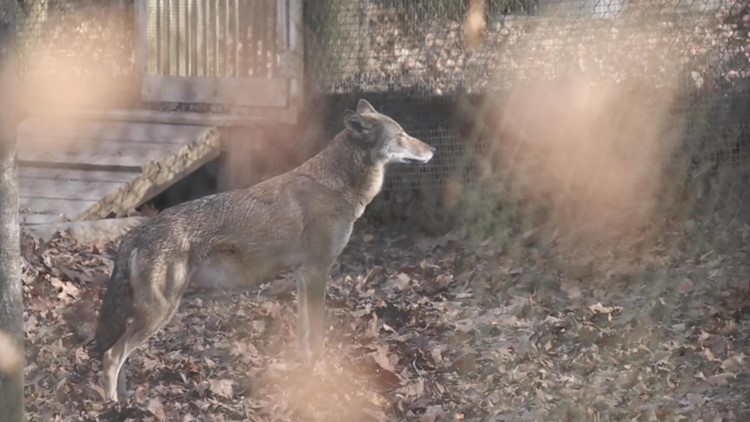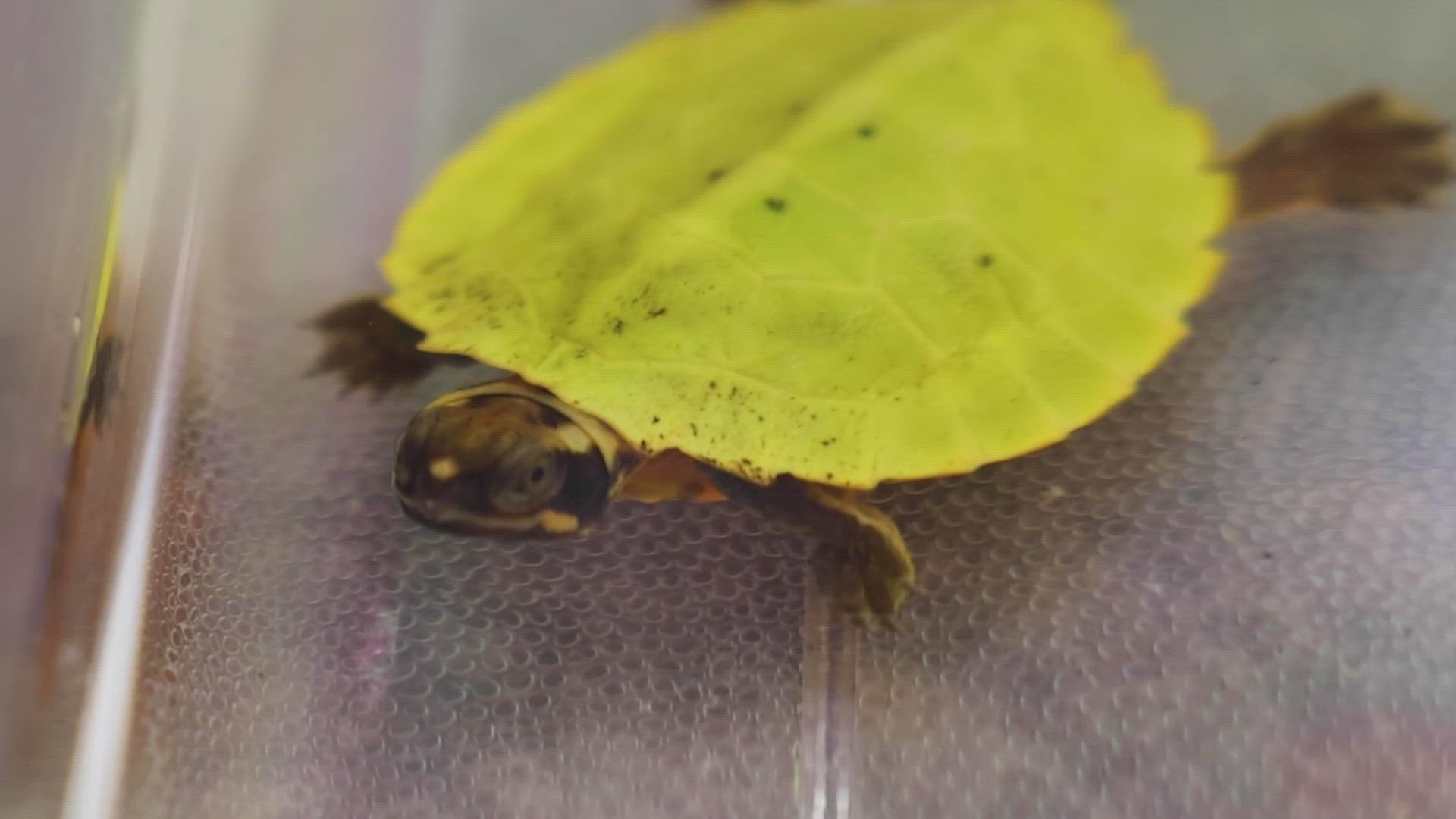KNOXVILLE, Tenn. — Zoo Knoxville is welcoming a new member to its red wolf pack — a new female red wolf who arrived from North Carolina. According to Terry Cannon, a curator of mammals and carnivals at the zoo, the new wolf will be the first unrelated female wolf introduced to the zoo in several years.
"Now, we've brought in this new bloodline — female. She's 2 years old, she came from North Carolina. North Carolina State University, actually was holding her and taking care of her, but now she's been asked to be moved here for future breeding recommendation with one of our males," he said. "Red wolves are very important. They are officially known as 'America's wolf.'"
According to a release from the zoo, the new wolf was placed in quarantine before being introduced to the zoo's two other males. Cannon said red wolves are considered to be extremely endangered and have been extinct in the wild for some time. He said there are only around 300 red wolves alive in the world.
"The last few red wolves were moved into protective custody, if you will, under zoos' and the U.S. Fish and Wildlife's care," said Cannon. "If you go to your local shopping center, there are more people there than are red wolves in the wild."
He said Zoo Knoxville started getting involved in red wolf conservation programs as they were reintroduced into the Great Smoky Mountains, during the late 1980s and early 1990s. He said when the program ended, the zoo chose to continue working on red wolf conservation.
"Red wolves that you see in zoos, they're all owned by the U.S. Fish and Wildlife. So, they help us manage and help us set the protocols for managing these guys. Any red wolf you see, anywhere, at any time, can be called upon to be released back into the wild," Cannon said.
He also said the only region with a wild red wolf population is located in North Carolina. However, he said Zoo Knoxville works to make sure the wolves are always ready to return back into the wild.
He also said red wolves have similar builds as coyotes, and people may confuse the two species if they see them in the wild. He also said red wolf packs are usually smaller units compared to other pack animals, comprised of a male, female and their offspring.



